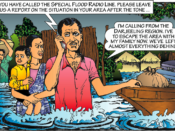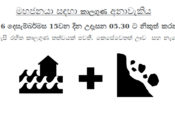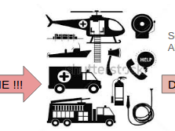Tag: Pictographs
-
Inclusive Public Services for Linguistically Challenged presented @ CPRsouth2018
Smart Governments, as part of their Smart Cities programs, must include linguistically challenged in public information and services. Pictographs (pictograms or symbology) can play an important role in disaster communication. Our recommendations, presented at CPRsouth2018 in Maputo, Mozambique (208-10-05), were: NATIONAL POLICIES AND PLANS – Amend national emergency communication plans and policies to include modalities…
-

Beyond text translations for the displaced and marginalized
Policy and Plans for Linguistically Challenged The European INTERACT project is part of a Migration Policy initiative. The project is studying how nations set emergency communication policies and plans in support multi-linguistics and crisis management. Findings are not promising and there is a severe need for intervention. Observation was that the studies had left out…
-
Sri Lanka completes Pictographs fieldwork, after devastating floods
We had scheduled to carry out the Pictograph comprehensibility and appropriateness tests with Sarvodaya Communities during the last week of May, 2017. Unfortunately, the low-literate and functionally-illiterate communities, in Colombo and Ratnapura Districts, who took part in the previous exercise, were severely affected by the flash floods from the unpredicted heavy rains. Our ground partner, Sarvodaya…
-
Testing our first Prototypical Pictograph Dictionary in the Philippines
We developed a prototypical pictograph dictionary and grammar around heavy rain instigated hazard events; namely ‘floods’ and ‘landslides’. This dictionary was developed from the findings gathered and analyzed from the field study in March. Sahana’s Pictographs in disaster communication project is considering two disaster communication work flows; thus, downstream “alerting” and upstream “reporting”. In alerting,…
-

Sri Lankan low-literate communities enjoy symbology in disaster communication
In general low-literate community members, in Sri Lanka, struggled with comprehending the Sri Lanka Meteorological Services text bulletins – that is what was observed. Simpler visual indicators are easier to digest and help them with deciding on the safety and response measures they need to activate. Our aim was to understand how low-literate (or functionally…
-
Extending Early Warnings to Linguistically Marginalized Populations
In a work for the World Meteorological Organization, M. Golnaraghi [1] stated that “it is crucial that warning messages are clear, consistent and include risk information, designed with consideration for linking threat levels to emergency preparedness and response actions and understood by authorities and the population.” However, in its current state of practice, early warnings…
-

Towards a Research Design: Pictographs in Disasters
The Research Team met at Microsoft Research India, in Bangalore, to formulate a practical and appropriate research design to test the hypothesis – “pictographs, designed for the linguistically challenged, can effectively communicate disaster information for saving lives and livelihoods.” In the context of disaster communication we have identified two key communication requirements, illustrated in the…
-
Symbols in Alerts feed into Federation of Internet Alerting Standards
Almost one year ago, I had presented a concept on the use of “pictographs in alerting” and shared the evidence for the growing need for such an initiative. This was at the 2013 CAP Implementation Workshop in Geneva. The real need was to aid the linguistically challenged: tourist in a foreign country and illiterate. Moreover, it…
